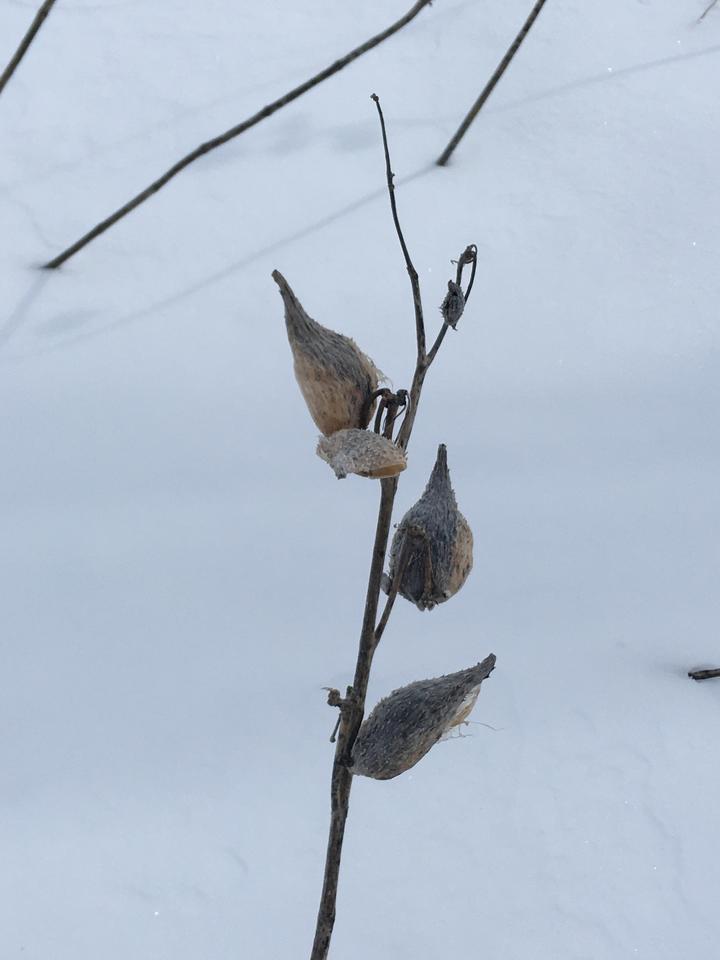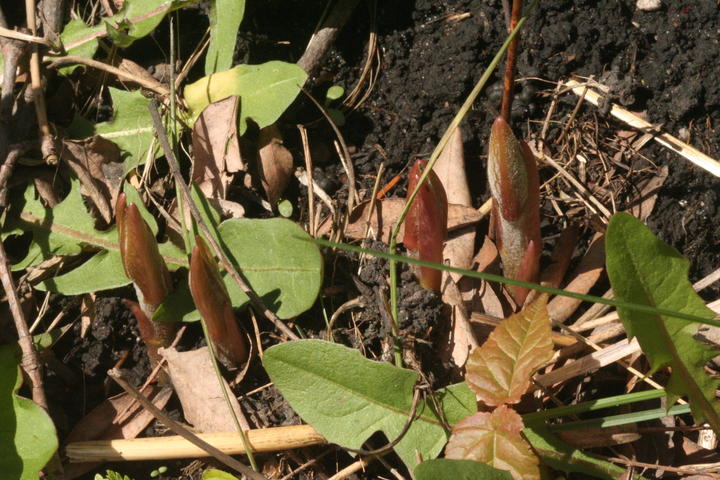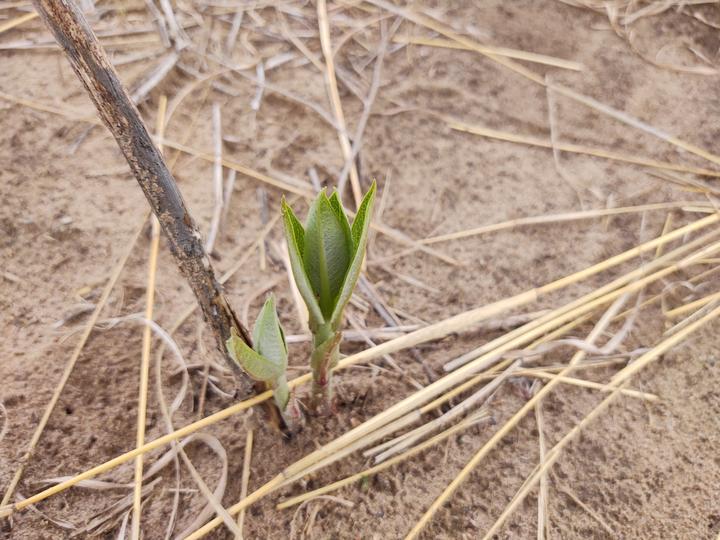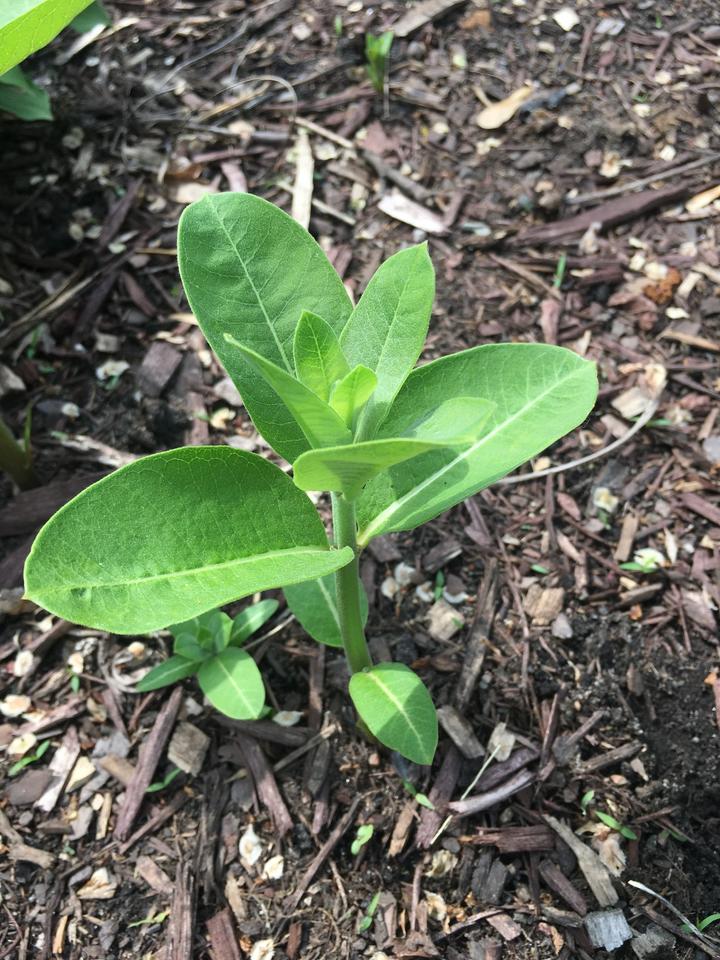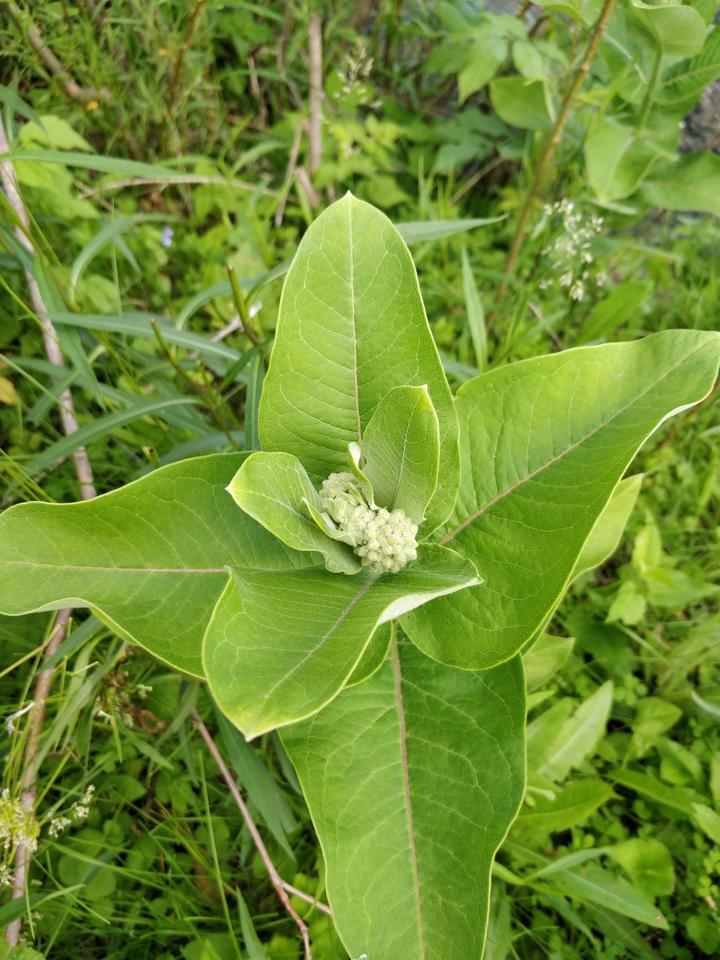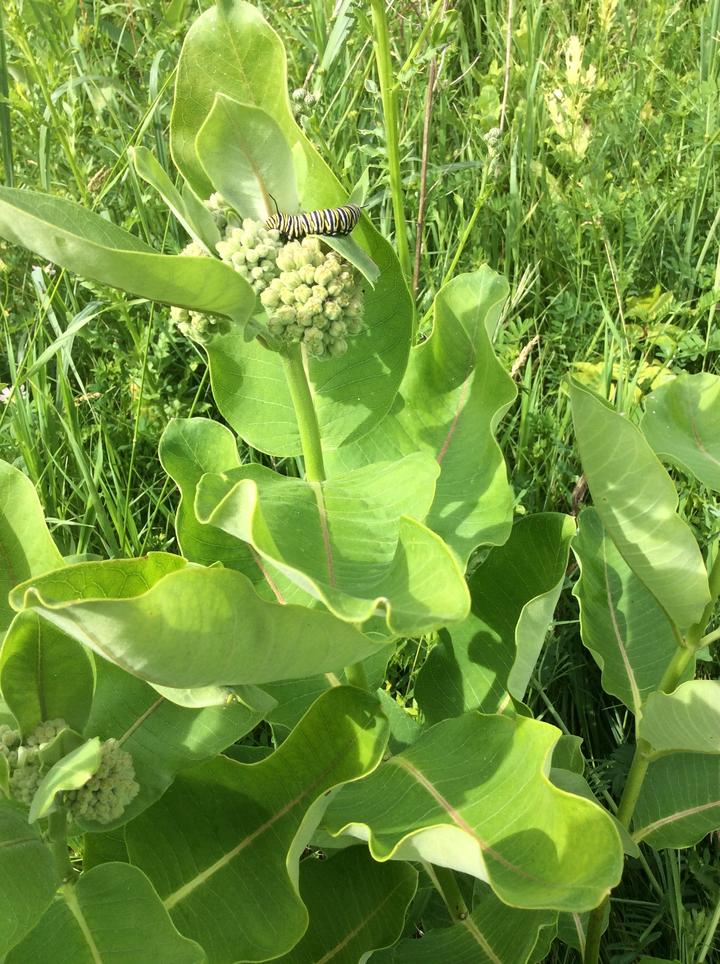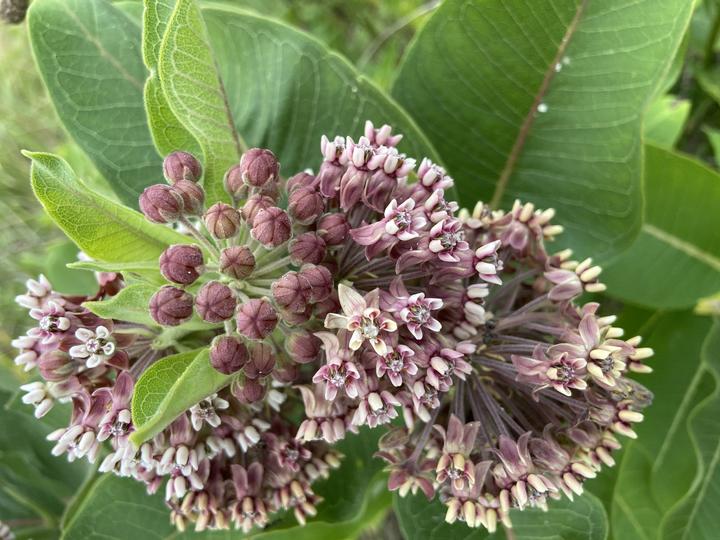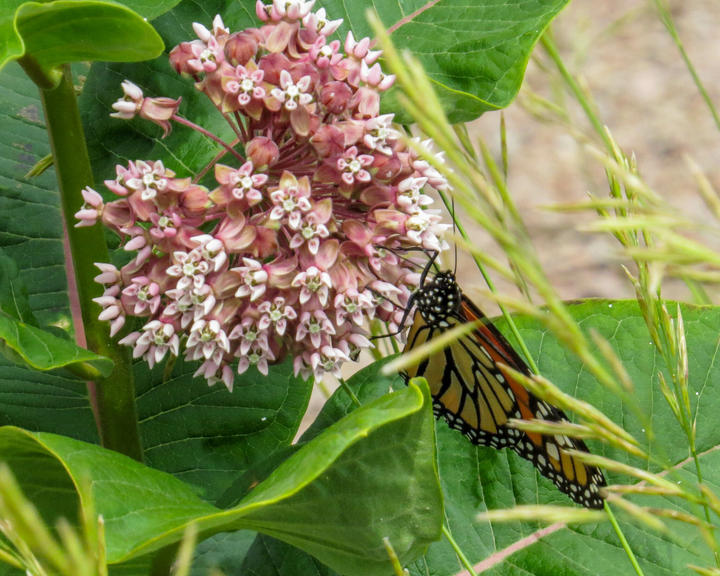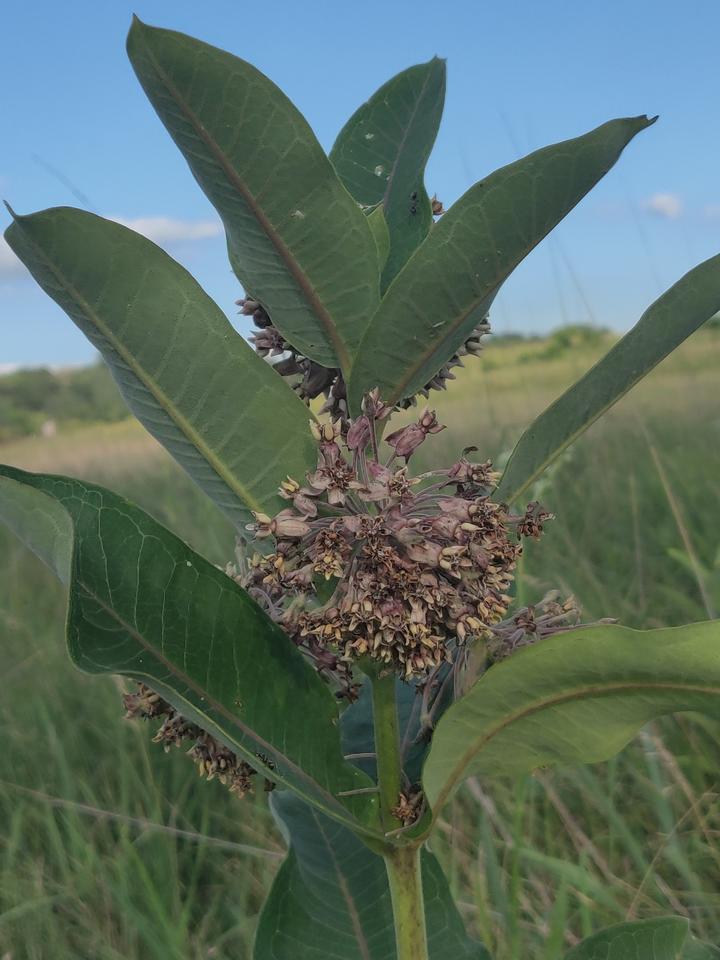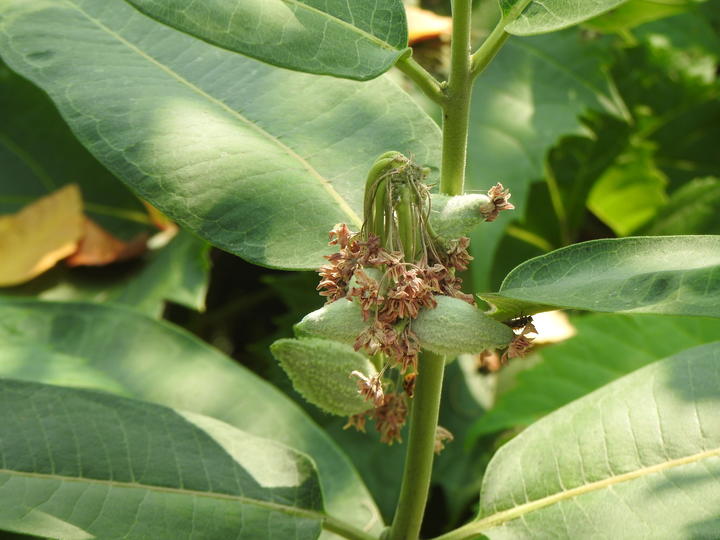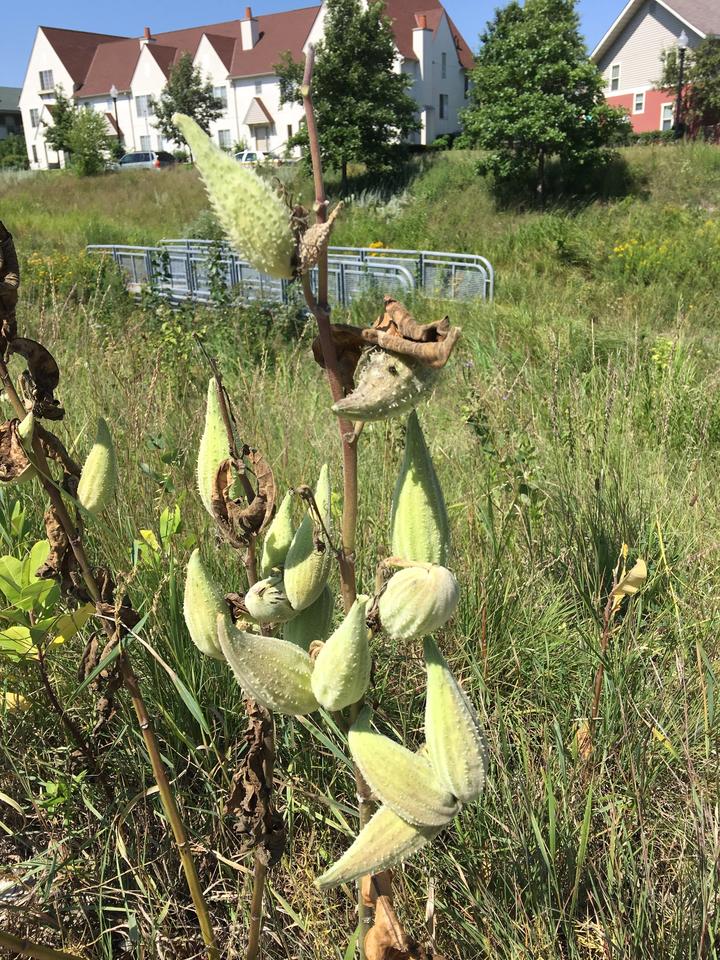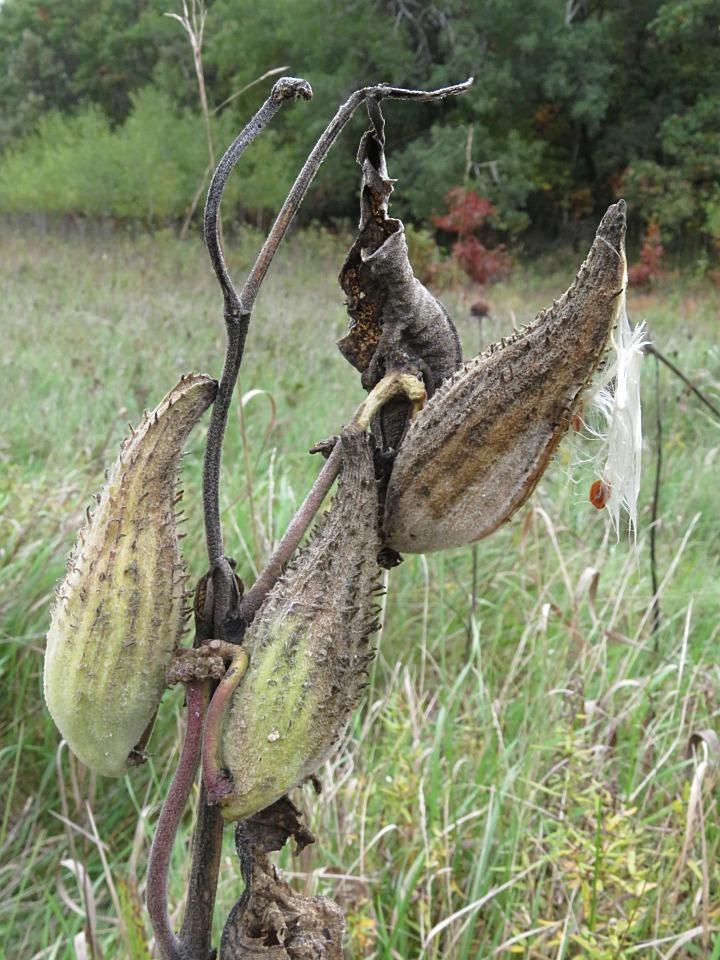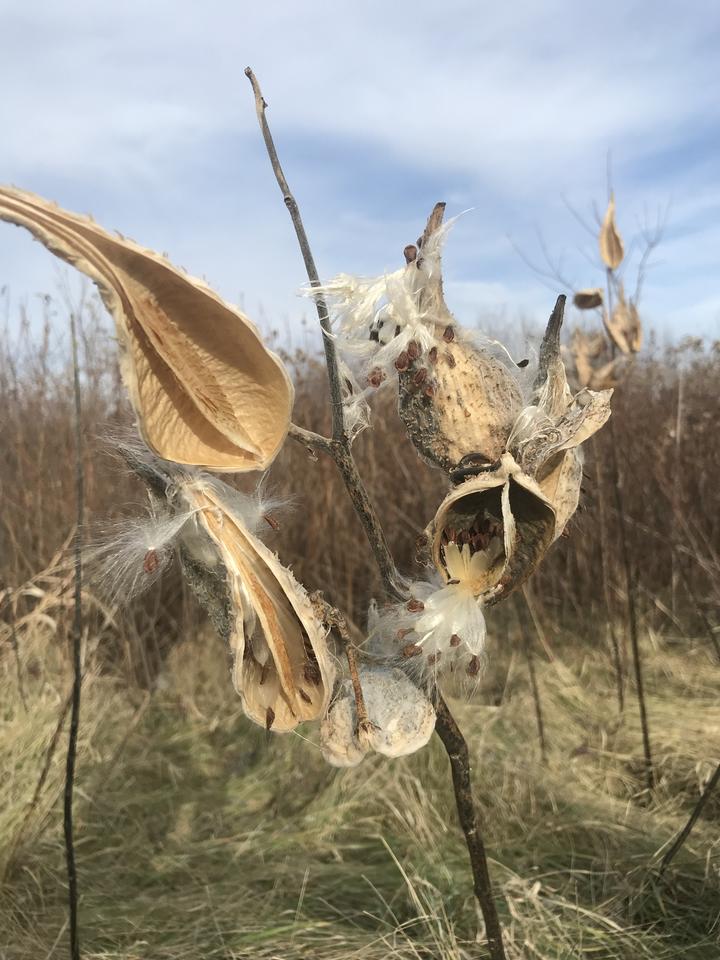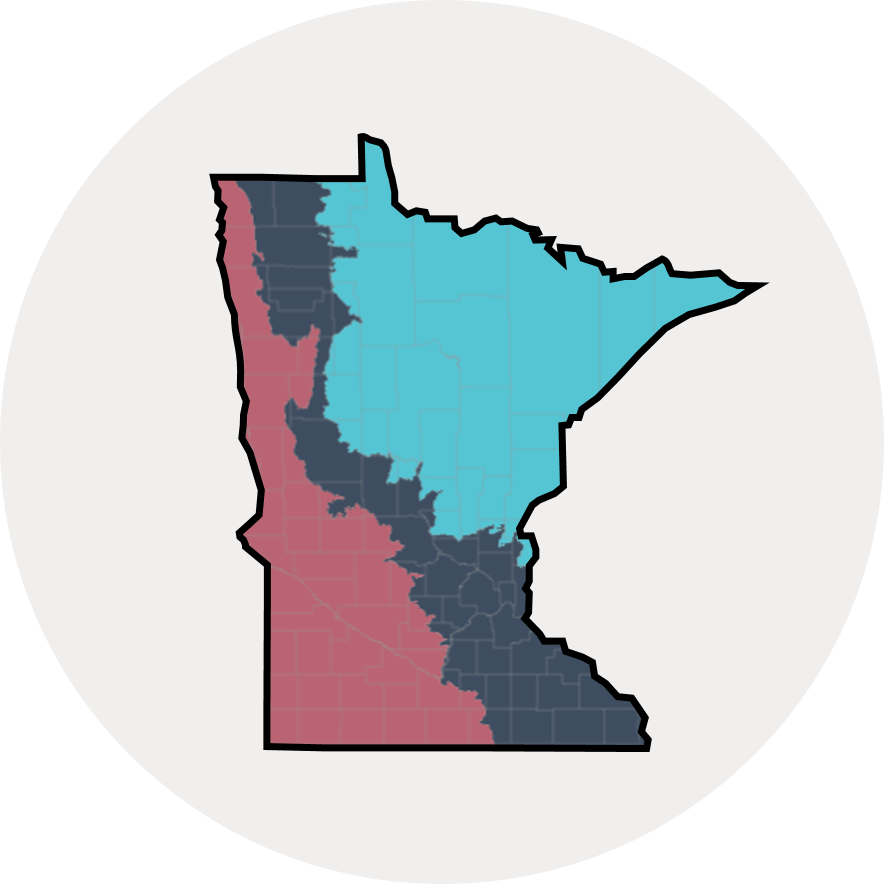More names for this plant
The Dakota and Anishinaabe were among the earliest people to name Minnesota’s plants and animals, as well as to understand them in relation to Minnesota’s climate and seasons. Those original names are still in use, and several are included on the Season Watch website. However, complete translations were not available.
Latin (or scientific name): Asclepias syriaca
The scientific community has a convention of assigning agreed-upon Latin names to every kind of organism. Using scientific names helps people communicate confidently about the same organism and organize lifeforms based on how closely related they are.
Page contents
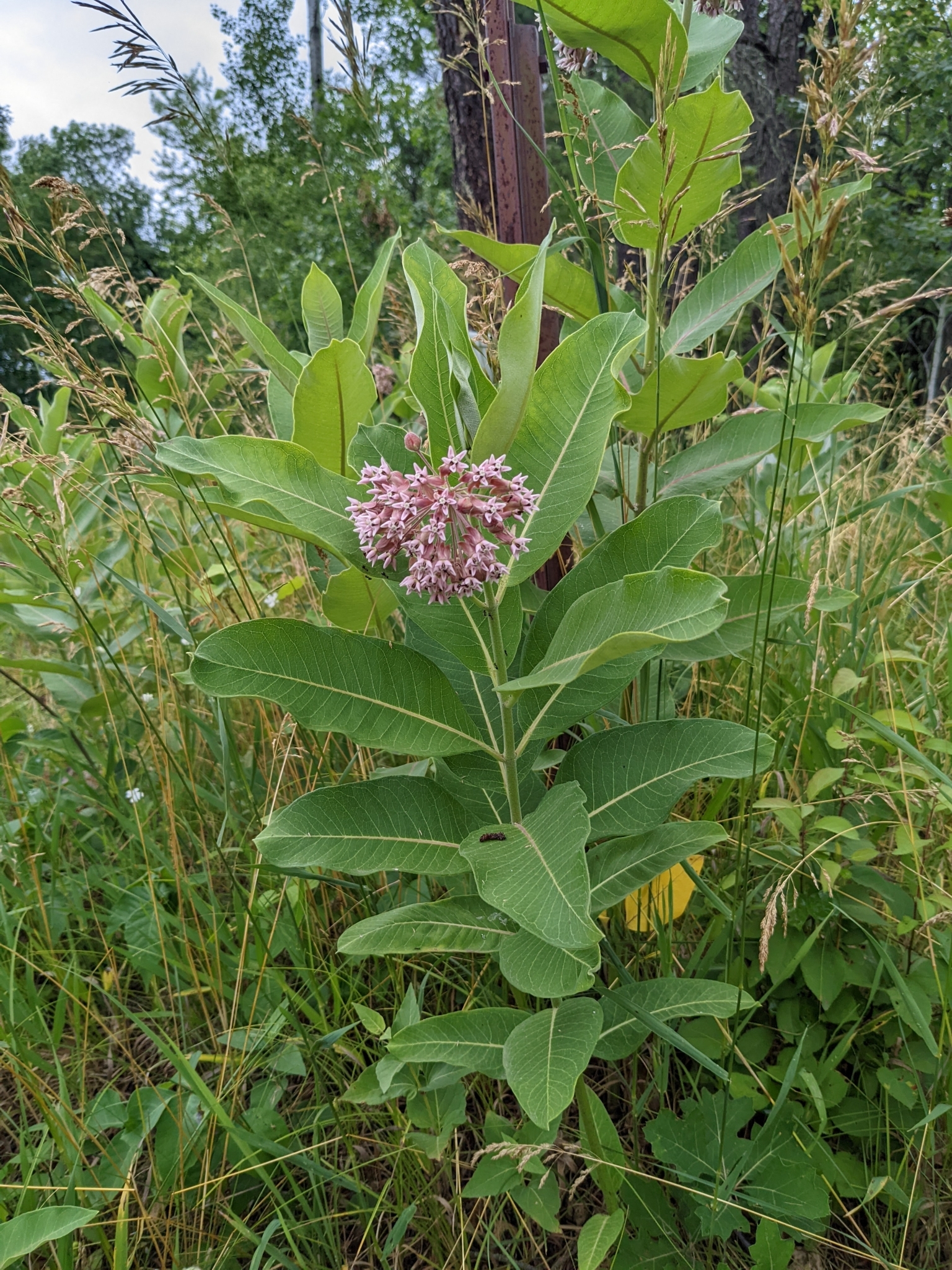
July 10, 2022, Cass County, Minnesota
Photo © Lorraine Briddon, some rights reserved (CC-BY-NC)
iNaturalist observation
About common milkweed
- Common milkweed is a Minnesota native wildflower that blooms in midsummer.
- Its flowers are fragrant and have a five-point symmetry.
- Milkweed commonly grows in sunny areas and ditches.
- Milkweed is the host plant for monarchs. This means that adult butterflies only lay their eggs on this plant and caterpillars feed exclusively on milkweed leaves.
- Milkweed's fruits are pod-shaped and change in color from green to tan or brown as they ripen.
- In late summer through winter, ripe fruits (pods) split open to expose fluffy seeds that travel on the wind.
Visual guide to phenology
Watch for the appearance of leaves, flowers, and fruits. Take notice of when flowers open and fruits ripen.
Note to observers
This page explains general clues to watch for when observing common milkweed phenology. However, this page does not explain how to identify this plant or collect data in a standardized way.
- For help with identification, see Minnesota Wildflowers.
- For guidance on collecting data, see Nature’s Notebook.
Graphs and historical data
Note: The Orientation Center provides a map, as well as information on reading graphs; interpreting summary statistics, who collected the data and how; and how to download datasets for independent exploration.
Flowering
- Earliest: June 9 (occurred in 1988)
- Average: June 26
- Latest: July 17 (occurred in 1960)
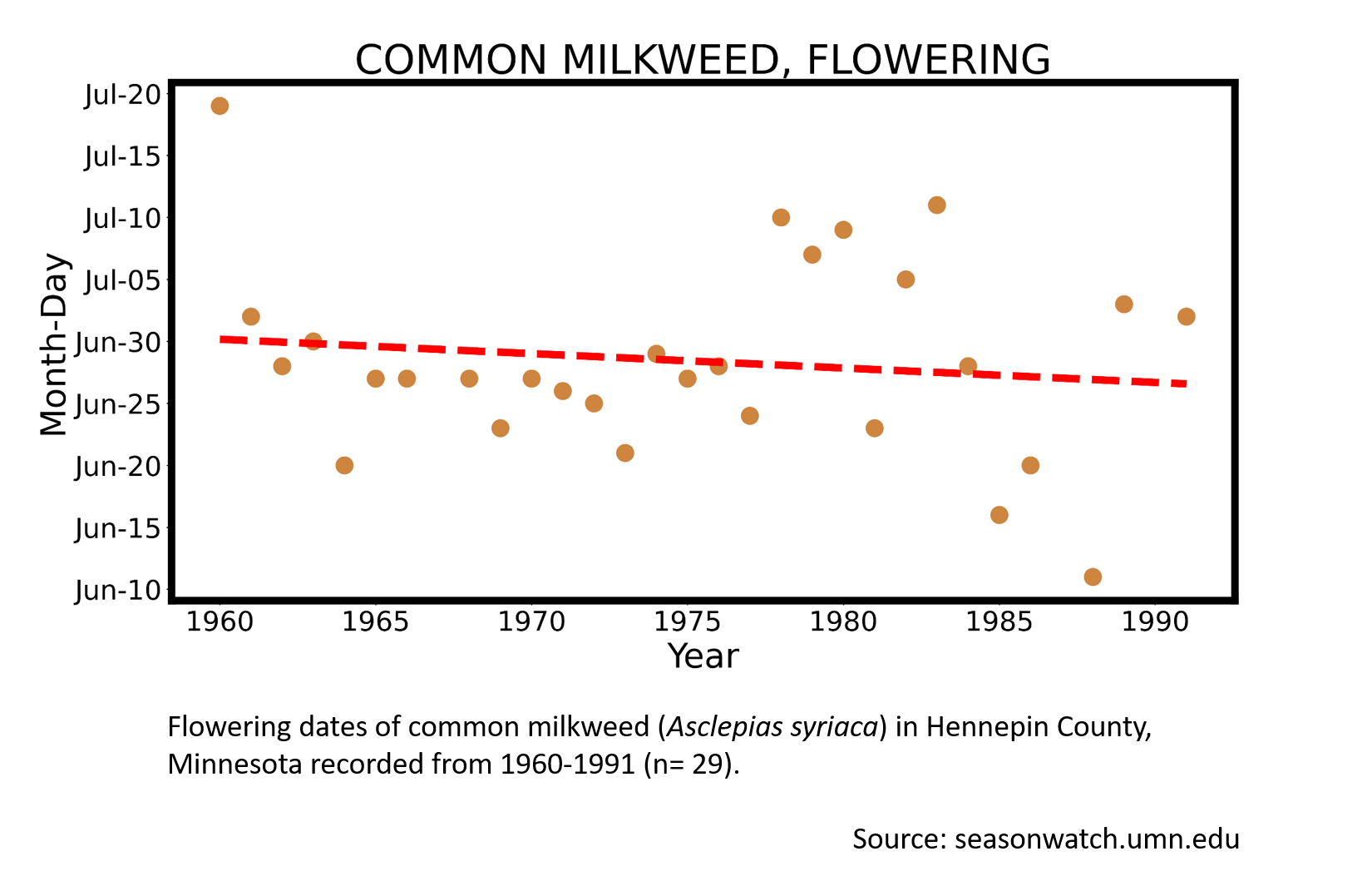
Last flower
- Earliest: July 2 (occurred in 1988)
- Average: August 1
- Latest: August 20 (occurred in 1968)
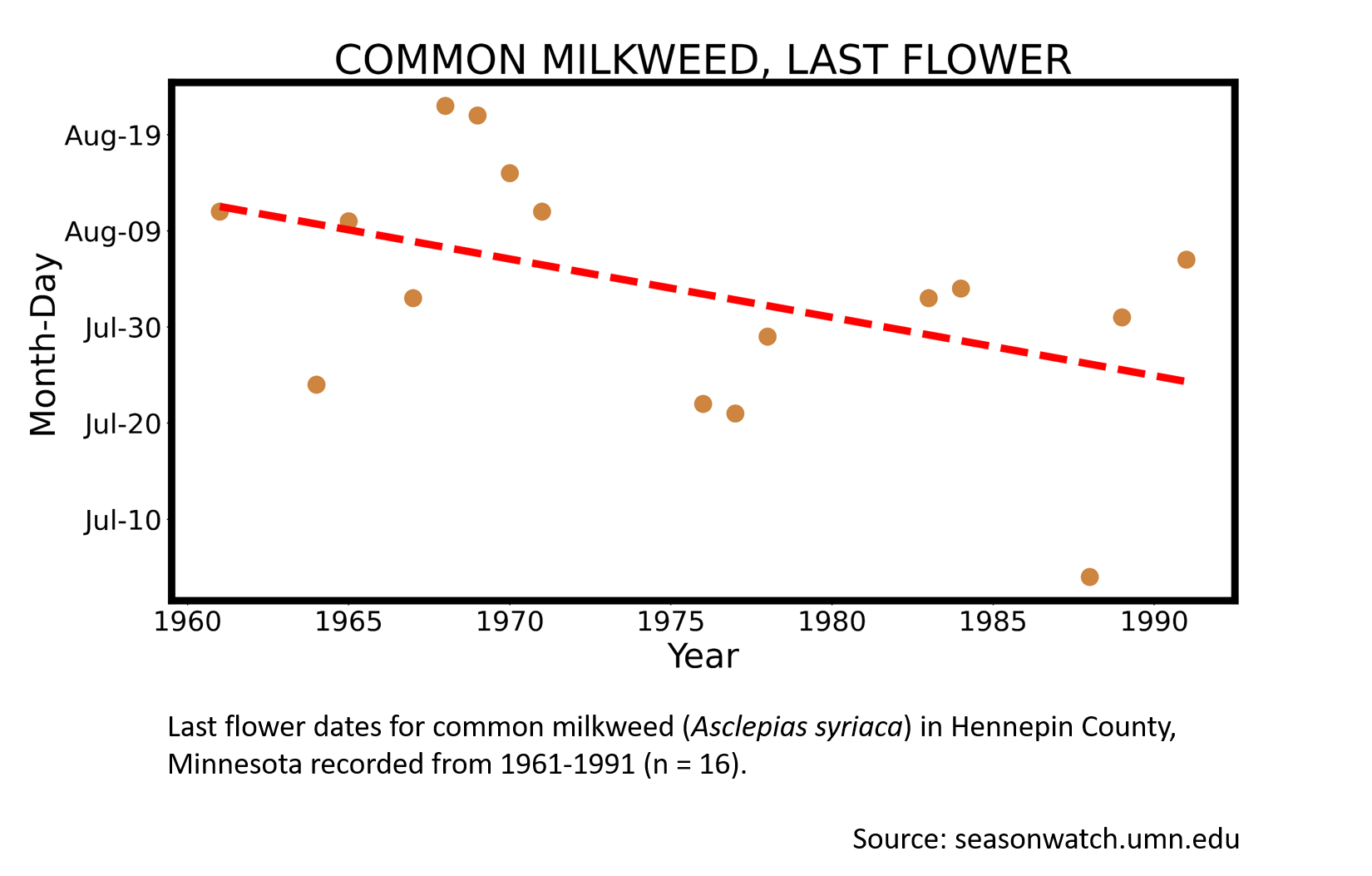
Flowering
- Earliest: June 3 (occurred in 1998)
- Average: July 1
- Latest: July 21 (occurred in 1984)
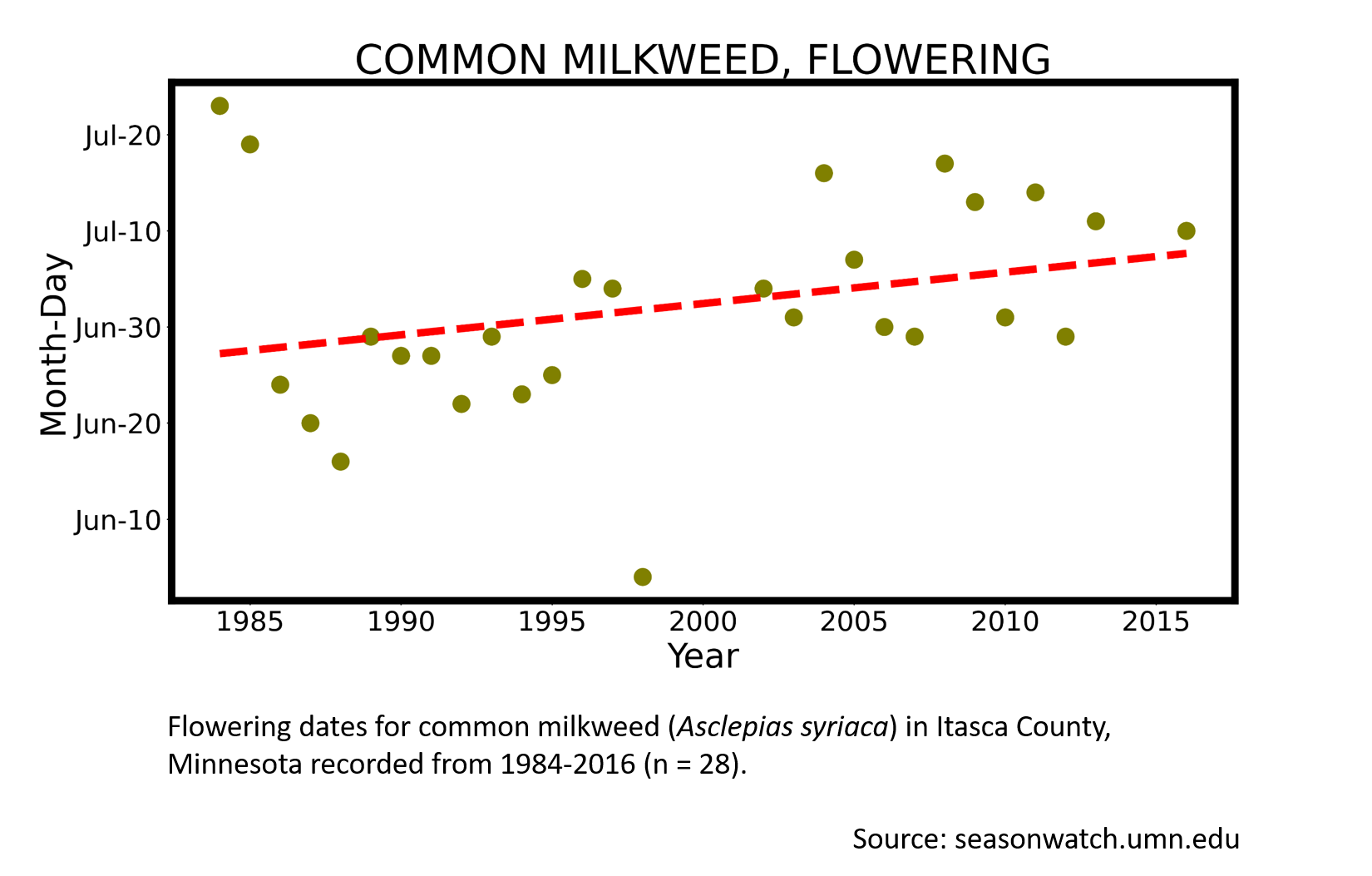
First fall color
- Earliest: July 24 (occurred in 1990)
- Average: September 1
- Latest: October 2 (occurred in 2011)
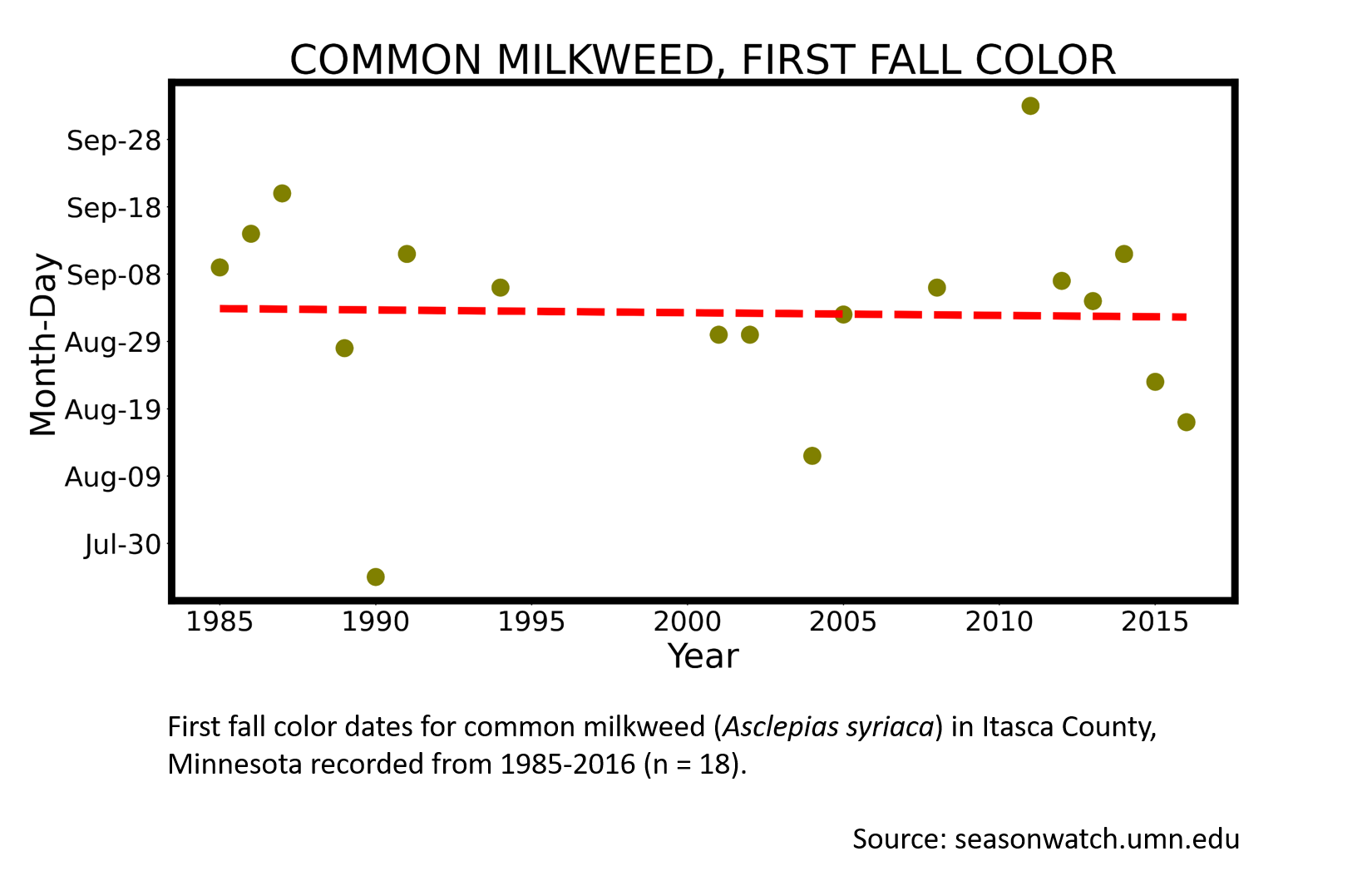
First flower
- Earliest: June 1 (occurred in 2007)
- Average: June 24
- Latest: July 3 (occurred in 2003 and 2009)
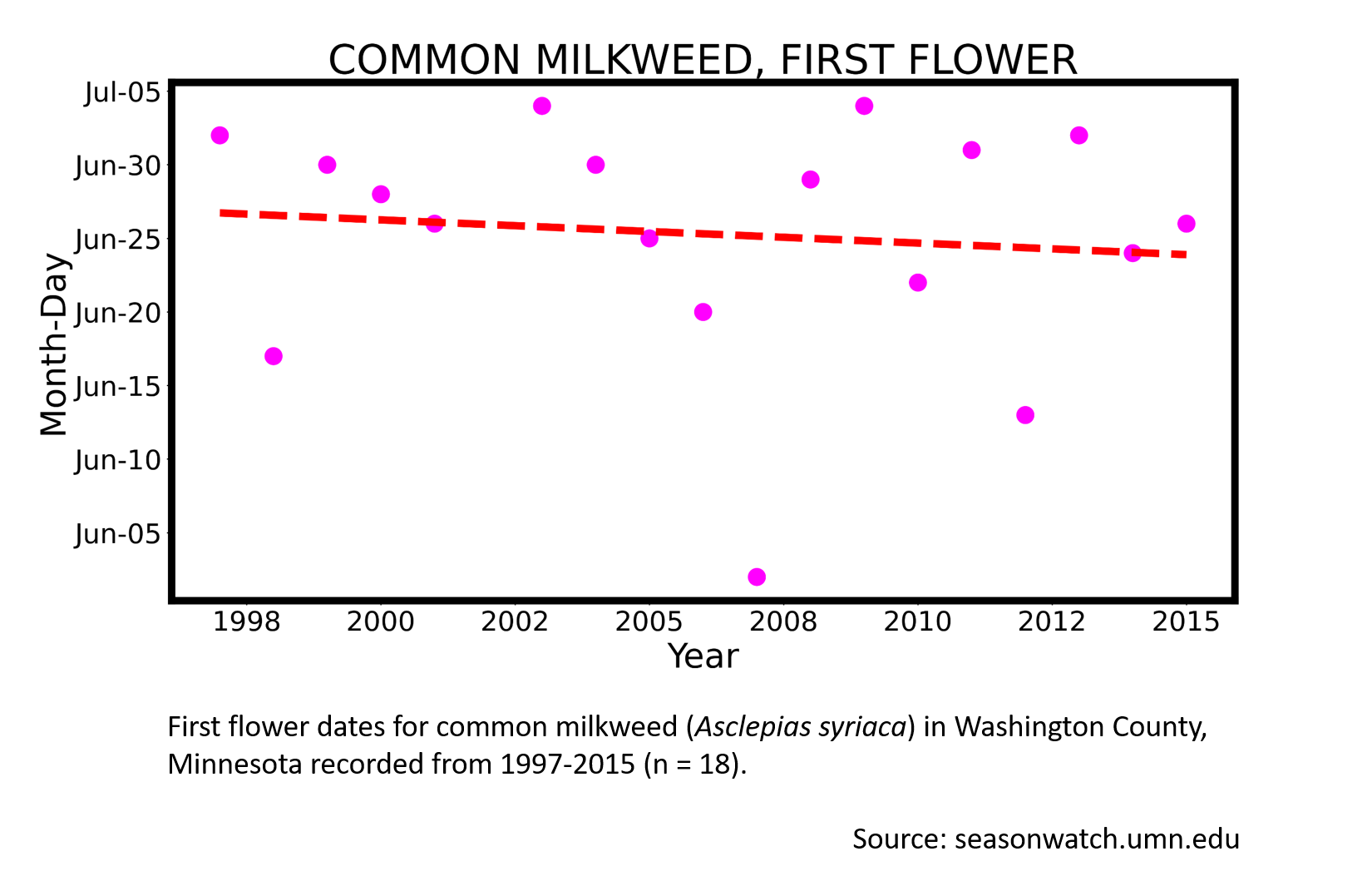
More resources

